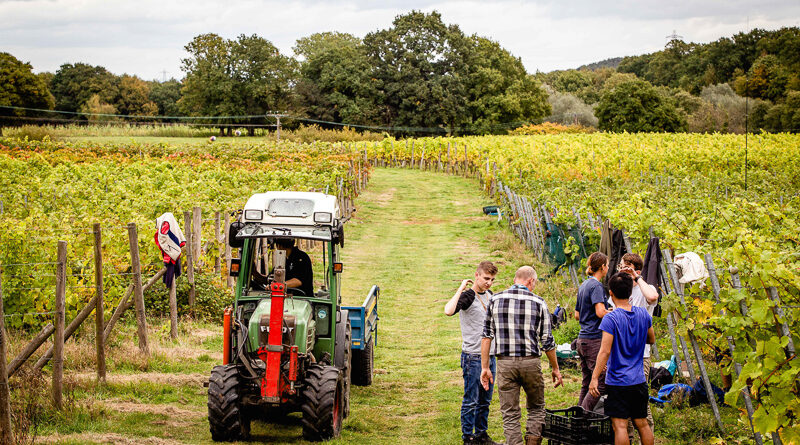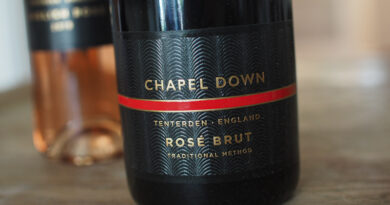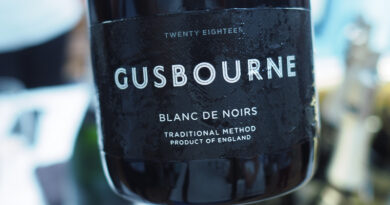Interview: Dr Greg Dunn, head of the wine division, Plumpton College
With the expansion of the UK’s wine industry, Plumpton College in Sussex has emerged as an internationally relevant centre for wine excellence, offering degrees in viticulture and enology and wine business, as well as training and apprenticeships. Here, I interview Dr Greg Dunn, Head of the Wine Division at Plumpton College, who came to the UK from Australia for a fresh challenge in a dynamic wine scene.
Dr Greg Dunn is a plant physiologist. He did his PhD at Melbourne University on salt and photosynthesis, and then followed this up with a postdoctoral research position in forest hydrology, measuring tree water use. After this he spent five years in forest research in the south-east of Queensland, looking at both native and plantation forests. He moved into viticulture during the midst of a boom time, in the late 1990s and early 2000s, working with the State Government Department of Victoria looking at yield forecasting. His next position was with the University of Melbourne as an associate professor of viticulture. Then, before he came to Plumpton, he was deputy director of the Grape Industry Centre at Wagga Wagga in New South Wales. Greg was initially Programme Manager for Plumpton’s MSc in Viticulture and Oenology, and then became head of the Wine Division in June 2019.
I began by asking him: what prompted you to come to the UK?
Greg Dunn (GD): I was looking for a change, a chance to go somewhere different. I’ve always wanted to work overseas. Plumpton came up as an opportunity. I know a lot of the wine regions in the USA and Australia very well, and some of the regions in South America. But this was an opportunity to come to a wine region that was really establishing itself – there’s a lot that’s new and exciting about that – and also there is the proximity to some of the old world wine regions. When you live and work in Australia, you can’t hop on a plane and in a couple of hours be in Bordeaux or Champagne or Rioja.
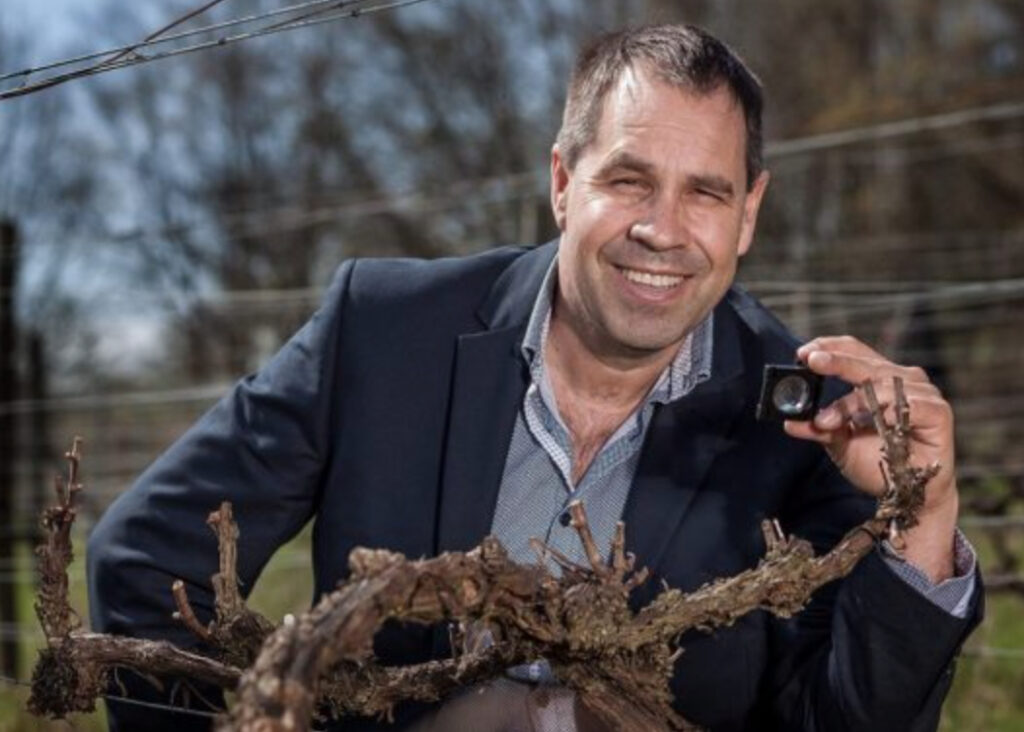
Jamie Goode (JG): What’s your impression of what is going on in the UK?
GD: It’s a progressive time for the UK when it comes to the wine industry and exciting to be part of its evolution. In terms of viticulture though, there is a lot still we can work on. There are issues with yield and also issues with stability of yield for instance. Yields need to be secured, and it is not as if all of the research can be transplanted from other regions. We work in a very cool environment that is quite marginal. There is the potential to innovate here: the industry can establish brands and styles that are innovative, outside the key focus on traditional method sparkling wine. Of course I am happy with this key focus because we can make some outstanding traditional method sparklers, but there is the opportunity to grow some things that are a bit different, and to make wine that’s a bit different. There are lots of things happening in big wine regions around the world, but because our wine regions are small and our industry is small, it’s difficult sometimes to get that innovation happening in the UK. That’s were Plumpton comes in, there’s a huge role for Plumpton here.
There is a need for knowledge transfer, too. There are many bright, passionate people who a excited to learn about managing vineyards. These are big information needs. The industry is also quite diverse: I heard that we now have around 30 vineyards in Yorkshire, which is astonishing. A lot of those vineyard managers or grape growers are at one end of the spectrum in terms of understanding grape vines. You can contrast that with what is happening in the south east, where there are places like Gusbourne and Chapel Down which have a lot of expertise. It is a diverse industry in terms of its education and training needs.
JG: With regard to yields, what sort of things can people do to improve them?
GD: What we understand about grapevine physiology is that during flowering, next year’s crop is being determined. If the conditions are suboptimal in terms of temperature, or cloudiness, or rain, next year you get a double whammy. So some of the fluctuations are due to those conditions during flowering. The conditions that determine next year’s crop are, in my opinion, perhaps more important than flowering itself in the current season, but they both contribute to stabilizing yield. There are issues to do with disease and frost that are always going to hit regions. They are pretty important in the UK. It’s not like there’s a silver bullet to solve yield.
How we structure our vines is interesting. We have tended to go for single or double Guyot systems, with not a lot of buds and managing very vigorous canopies to maximise harvested radiation, while keeping canopies thin to manage disease. Sometimes I think we could look at things a bit differently. I understand single and double Guyot are efficient systems to set up and manage, but when those are used in Champagne the vines are planted at a density of about 7700 vines/hectare. In some situations it is timely to look at our trellising systems, and perhaps rethink the number of buds we retain, and how we manage canopies to ripen fruit and also manage disease.
Another area the division is keen to work on is understanding clones and rootstocks in our environment. There are things like PIWI vines [new varieties that are largely vinifera but which have some resistance traits of native American and Asian vines] and things that come out of marker-assisted programs [marker-assisted selection is a sped-up way of breeding new varieties with desirable properties], varieties that yield well and have good fruit composition characteristics, but these are difficult to push and sell in a market that has been so traditional.
JG: I find the PIWIs really interesting, and marker-assisted selection for resistance traits seems a promising approach.
GD: Absolutely I agree, however currently the issue is we don’t have the critical mass to get our own specialists to do this. These programmes exist in other wine countries like Australia, France and Italy. How do we interact with other regions to try to benefit from some of that expertise? A lot of CSIRO’s marker-assisted selection is about growing grapes in a warmer environment, and maintaining colour and acidity. That isn’t an issue for us. How do we capitalize on this expertise when you have a small industry?
JG: Can you tell me a bit about Plumpton’s Wine Division that you are heading-up?
GD: We like to see Plumpton as the UK’s centre of excellence for wine education, training and research. They are all important to us, but we are best known for education. There aren’t many growers or winemakers or people working in the UK wine industry that haven’t received some sort of education or training at Plumpton..
We offer degrees all the way from level 4 to level 7. We offer a BSc in viticulture and oenology that is validated through the RAU. It is a traditional viticulture and oenology bachelor’s degree and trains people to be vineyard managers or winemakers, but where it differs from other degrees around the world is that there is a very strong practical component to it. We have a commercial vineyard and a commercial winery, and students spend a lot of the first year in the vineyard and a lot of the second year in the winery. We also sandwich an overseas vineyard placement or a vintage between the second and third year. Our students come out with a high level of practical expertise. This is what we think differentiates it from other degrees out there. If you went to UC Davis you wouldn’t get anything like the time that a Plumpton student has available to them in the winery, for instance. This is our most popular course with a cohort of around 25 to 30. This degree can also be a two-year foundation degree.
Most of the students come from the UK. There’s a diverse age range: the average age is late twenties but it is not unusual to have people in their forties and fifties doing our degree. They all have a love for wine and the vineyard. We pick up a lot of career changers. We don’t pick up a lot of students straight out of school, but we would love to. Five to ten percent of the students are from overseas, mostly from Europe. The degree is certainly an international one, so we would definitely like to attract more potential students outside of Europe. It is a degree taught in English in an English-speaking country that is very close to old world wine regions. We think this is a very attractive for someone from Australia, New Zealand, the USA or South Africa.
We have a business degree also: an BA in wine business. It is a smaller cohort and we’d like to increase it. There is also a two-year foundation degree. A vocational programme designed to provide a knowledge and working understanding of the UK domestic wine industry, international wine production and core business skills. There are three strands, first is a grounding of information relating to core business skills, such as operations management, marketing, consumer behaviour and human resources. This is then applied and contextualised directly to the ever-changing global wine industry and we critically evaluate both the domestic and international wine markets as well as the key distribution channels for wine. London is a really important city in terms of the wine trade, so our business students usually end up in exciting jobs all over the world.
Six to seven years ago we also introduced a masters degree in viticulture and oenology. It has become increasingly popular and our intake for this is 15-20 per year. This is a conversion degree, so you don’t have to have done anything with grapes and wine, but you have to have some science. A lot of career changers do this. It fast tracks them as vineyard managers and winemakers. The most exciting part of this course is they get to do a 6 month placement project, and this is where we do a lot of our research.
We also have a brand new apprenticeship program. This is over two years and is delivered in 10 weekly blocks over this period. This is exciting because it is the first time an apprenticeship has been offered nationally in viticulture in the country. We have nine apprentices in this first cohort, and they are two months into the course.
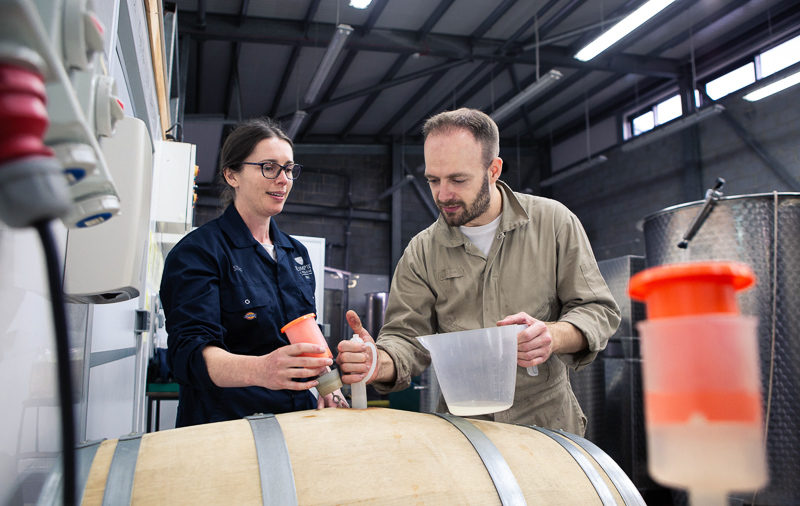
JG: What’s the job scene like in wine in the UK?
GD: The biggest need is for trained people to work in vineyards. It is not difficult to get a job in vineyards. You aren’t necessarily going to walk straight into a well-paid vineyard manager’s job, but it’s not difficult to work your way up quickly. There are lots of jobs for winemakers, but people normally start as assistant winemakers or cellar hands. Again, it’s a case of working your way up. For most of our students, if they want a job in a winery or a vineyard, they will end up with one. And not always in this country. Some of last year’s graduates are working in the USA, France and Italy. While it’s not easy work, it is rewarding, and the scope of potential career paths is exciting.
JG: What do you think is going to happen over the next few years with English wine?
GD: Because of the yields and the labour-intensive nature of our vineyards, it is an interesting situation. To make it pay, you need to get a premium price for your wine. As more vineyards come online, I’m not sure what is going to happen. There will be a lot of fruit, a lot of wine. Is the industry going to be able to find markets for this wine at a price point that will be competitive and economically sustainable? We are probably going to almost double vineyard area to 6500 hectares in seven or so years, and we are sitting on about 3500 hectares at the moment. A lot of that 3500 hectares has been planted over the last few years, so as that fruit comes online, and as markets develop (or don’t develop), we will see some sort of sifting. Some people might drop out of the industry, and there might be some consolidation of vineyards. It very much depends on what happens with the product, and what happens with the marketing of the product.
The industry needs to become more efficient in terms of the vineyard. At Plumpton we hope to play a part in supporting the industry and this movement. The costs of production are too high at the moment. It is an industry that will become increasingly mechanized. But there are factors we don’t fully understand, for example with Brexit and pickers and contract pruners. Some of this will drive the uptake of mechanization. It is an interesting time.
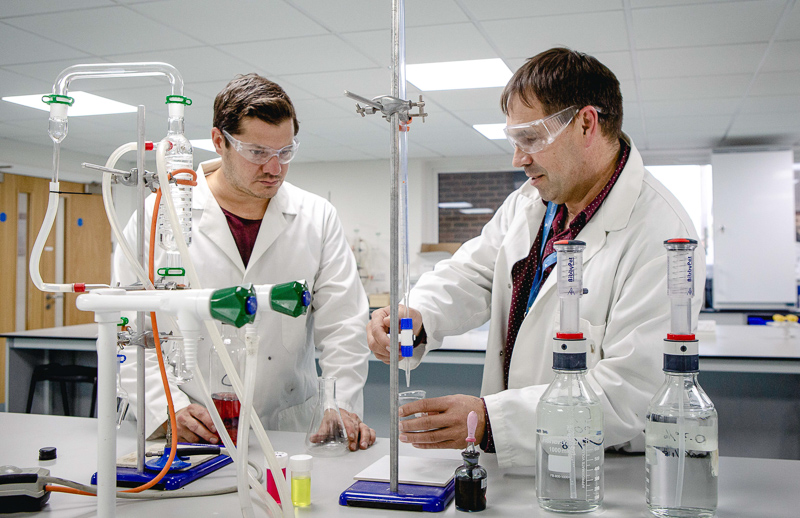
JG: What sort of mechanization do you envisage?
GD: There are some varieties, such as Meunier, that can be spur pruned. This cuts production costs substantially. If we are going to use cane pruning, there are automated devices that strip (pull out) the old wood. In all vineyards, we’ll probably see automated shoot lifters. We are starting to see mechanized harvesters, but not for sparkling wine fruit which is hand harvested. There are labour-intensive processes such as bunch thinning and shoot thinning. We will have to either look at mechanized systems to deal with these, or not doing those operations – somehow doing things differently.
There are some long-standing ‘rules’ about how we manage vineyards in a cool environment, these are about how we manage canopies and buds, and what we do with shoots. We may be forced to re-evaluate some of those rules. I often ask myself what are the fruit quality targets you aim for when you are making sparkling wine? Is there a way we can arrange our vines so we have more buds and can increase yield, without compromising what we see as fruit composition quality?
JG: Do you see much of a future for organics in UK vineyards?
GD: There will be a future for organics because people are so passionate about it. The UK is probably one of the most difficult environments to grow fruit organically. Most of the research says that with organics you are looking at a loss of production of 10-15%. A lot of that research was done in warm places, like McLaren Vale, where disease pressure is lower. In an environment like England where it is often wet during ripening, and the disease pressure is a bit different, you are probably going to be looking at larger losses of production. The study that is most relevant is a recent one done in Germany looking at a 20% reduction in productivity from organic systems. They are hugely popular among our students and a lot of our young students in particular are interested in organic wines, low sulfur wines, wines made naturally, wines made in qvevris. To what extent this translates to the greater marketplace is the issue: are people going to pay a premium? Are they going to select organic wines as opposed to conventional wines? I don’t think we have the answers yet. Moving forwards, organics are certainly going to be part of the industry and we must accommodate that.
With naturally made wine, one of the first things you can do is start the process with very high quality fruit. In order to make low-input wines, you need to understand the winemaking process and you have to have good fruit to start with. You can’t get away with sub-optimal fruit. Mark Dixon’s MDCV, one of the big new entrants, have committed to farming organically or biodynamically on all their vineyards.
JG: Do you think there will be a future for herbicide?
GD: This is a debate we often have with the students. Glyphosate is a relatively safe herbicide that breaks down pretty easily in the soil. It has been used for a long time, and we understand it. I think we will lose it, because of successful human health litigation in the USA. Burgundy has committed to use no herbicides, as have Bordeaux and Champagne. If we do lose herbicides, how we manage the alley row is going to become very important. I don’t think cultivation alone is the answer, in terms of soil structure, compaction and degradation. We are going to have to be a bit smarter about how we manage the vineyard floor.
JG: What research projects are you interested in at the moment?
GD: We have a brand new sensory scientist, so we are very interested in a lot of sensory customer perception projects – those projects that are on the interface between sensory science and consumer perception. We have six or seven of these among the masters students about understanding what are the descriptors for English sparkling wine, do different regions perceive English sparkling wines differently and so on. We are also looking at old work that needs revisiting, like does the colour of sparkling wine affect the perception of sweetness. In the winery, we are continuing an emphasis on malolactic fermentation, we are interested in what you can do with early harvested wines. For example, we are looking at Bacchus to see whether enzymes and yeasts can release more of the thiols or get a better outcome in terms of the terpenes. We are also interested in PIWIs: we have a student working with WineWorks to try to make really high quality wine out of PIWI varieties. In the vineyard, most of the projects are driven by yield. We are interested in clones and rootstocks, and we have a couple of years of projects on bud dissection and bud fertility. We have also revisited some of the work that was done on managing canopies during fruit set. We also have some projects on spatially mapping vineyards.
JG: What about training?
GD: We are really keen on supporting the industry and offer a lot of training programs through our WineSkills program. At the moment we are reworking our industry support approach. There are six regions in the country and they are at different stages of development, and we would like to do a lot more regional delivery. A project we are working on is to host a post-vintage workshop in every region in the country, and we’d probably like a roadshow in every region in the country to. At the moment, this is being developed by our new program manager for WineSkills, Dona Frost.
Picture credits: Plumpton College/Christopher Lanaway Photography

